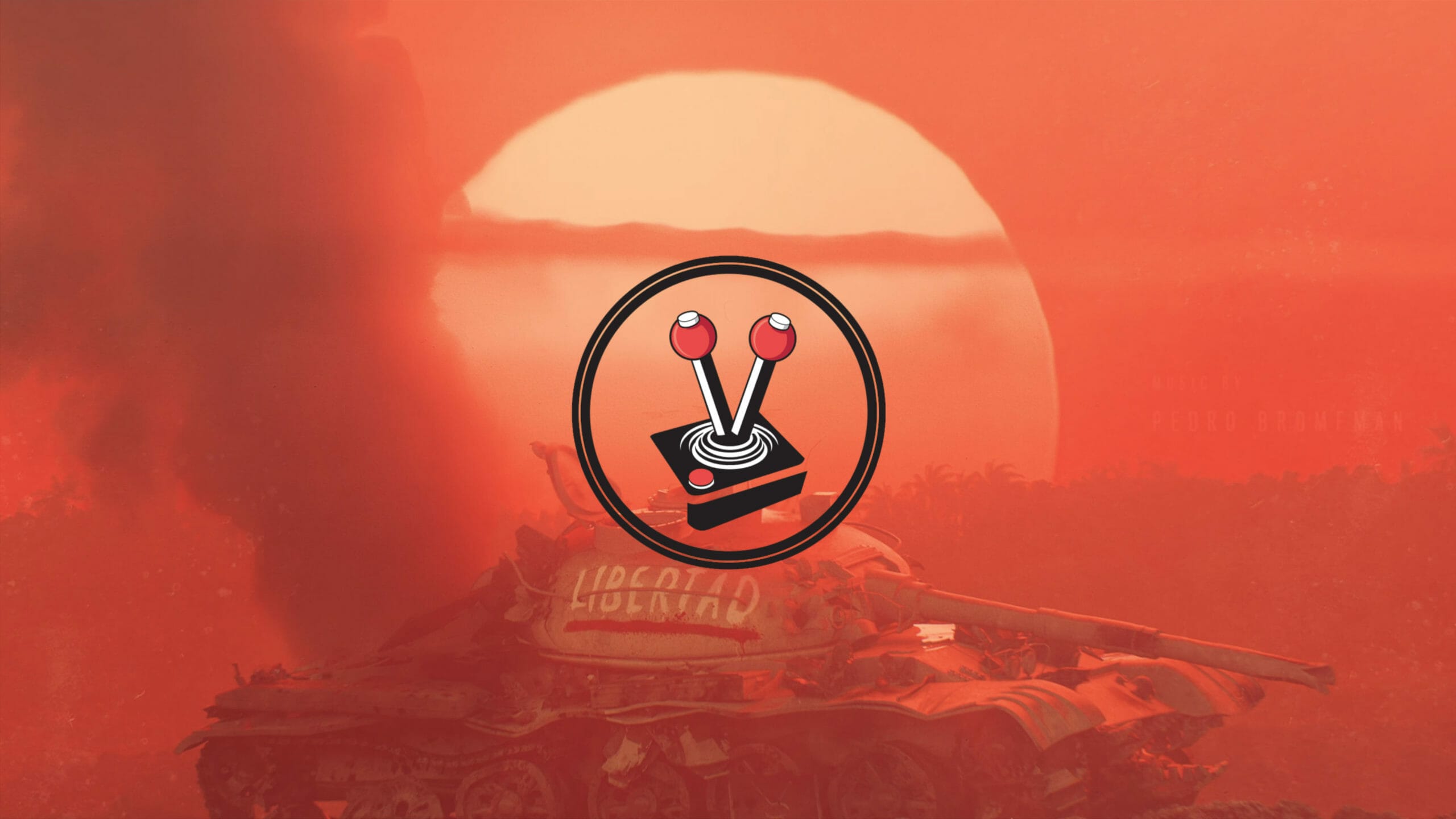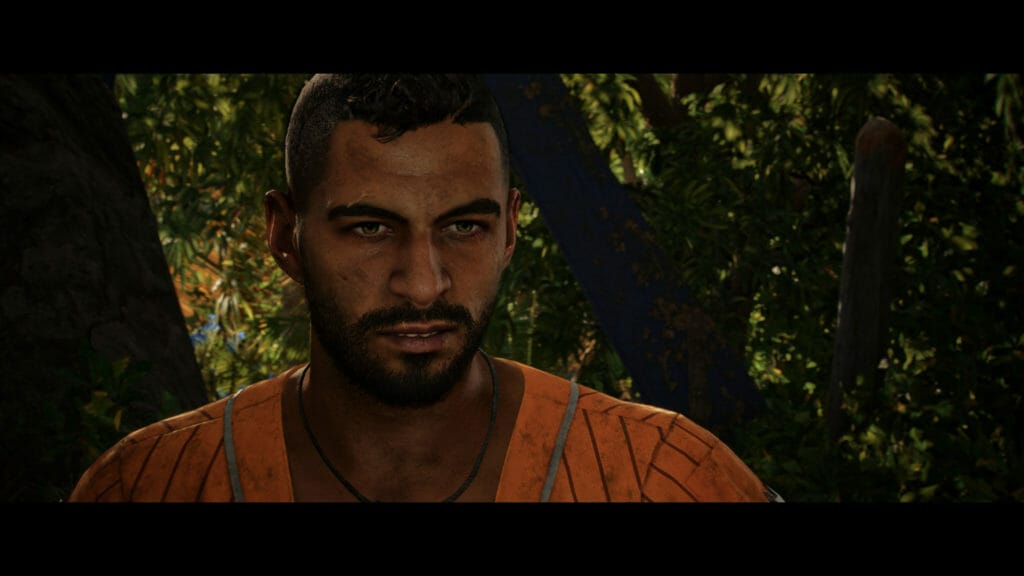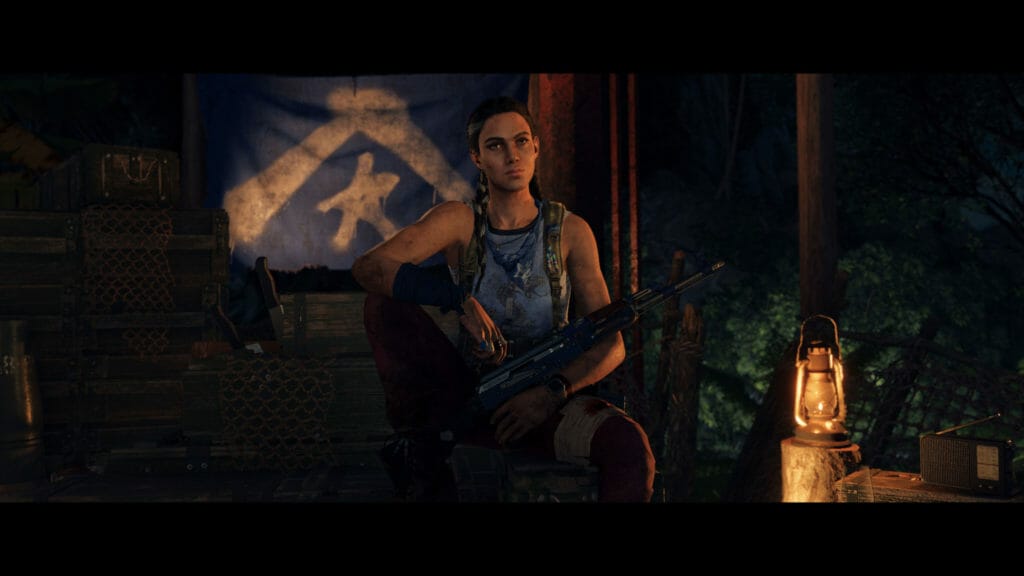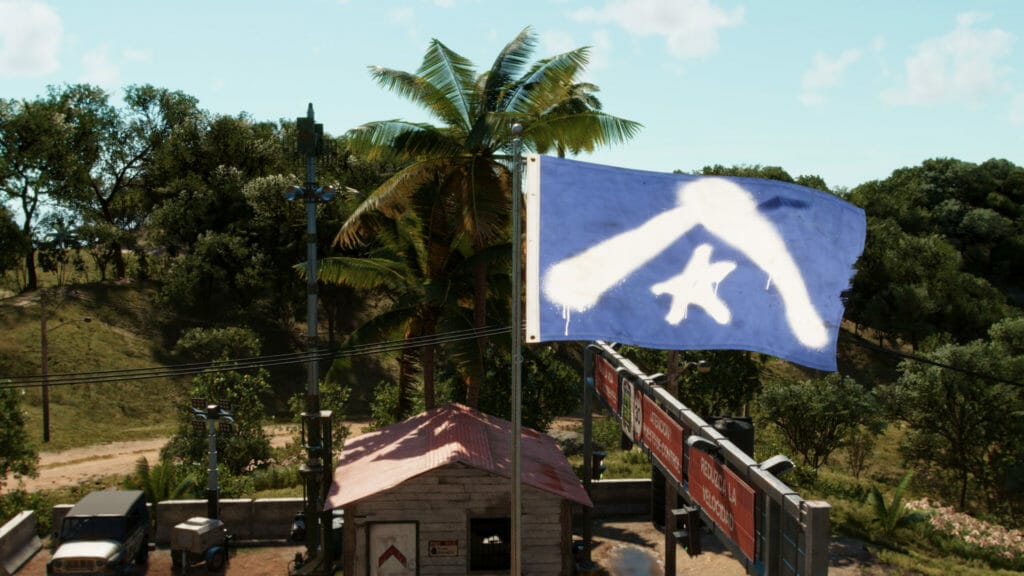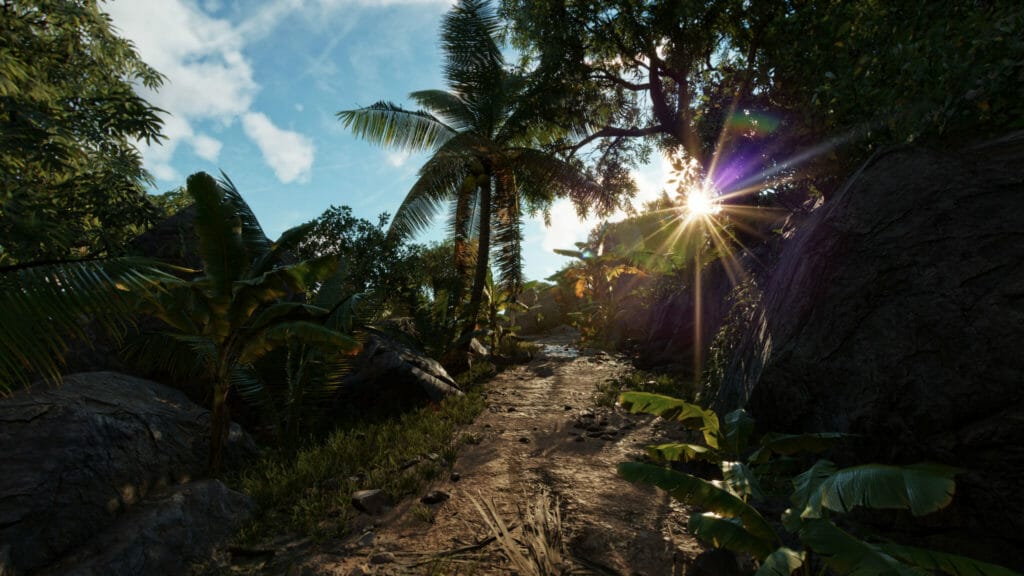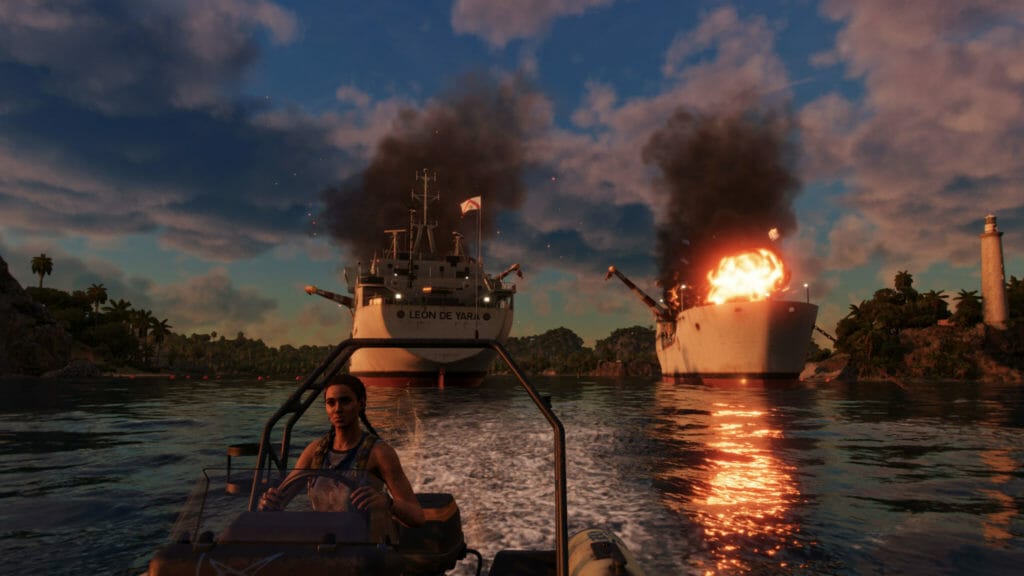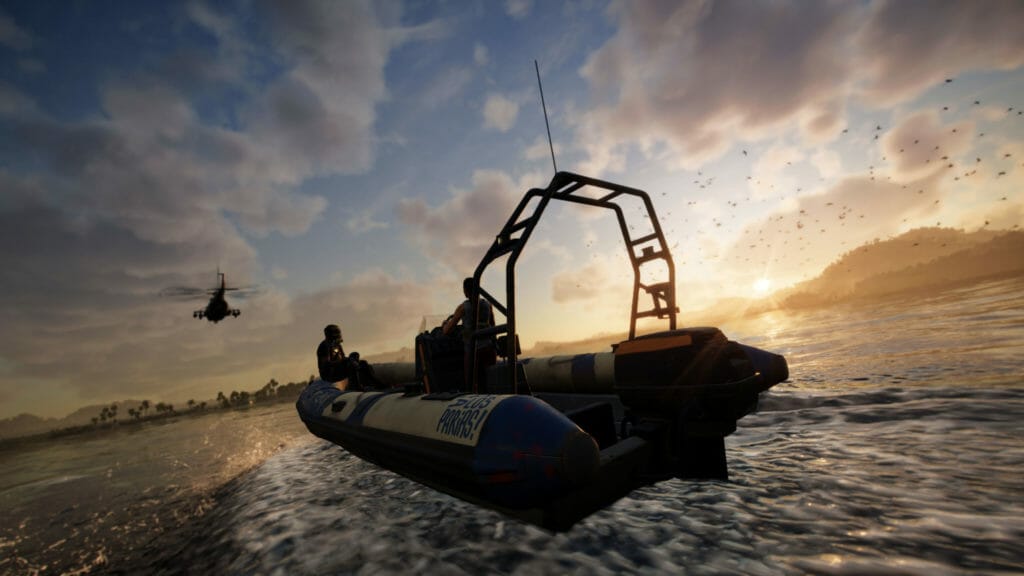Far Cry 6 is the latest entry in the long running and award winning Far Cry franchise. A legacy of games offering what is arguably the ultimate triple-A (or is it quadruple-A now?) experience. Each new entry has an open world, with regions growing in difficulty over time; there are collectibles, tonnes of side missions, a seemingly infinite amount of unlocks, and a forever changing progression system (with each new instalment). Far Cry games are often the pinnacle of what a good narrative driven open world first-person shooter should be like, and they are very easy to like and enjoy as a result.
In terms of the franchise, Far Cry 3 has the most unforgettable protagonist, whilst Far Cry 4 evolved the series with a clear and new “RPG-lite” focus. Both of these titles were bi-annual instalments, and they most definitely cemented the franchise’s dark, yet strangely humorous, themes. However, Far Cry 5 was the ace in the hole, proving exactly what the franchise was capable of in terms of narrative and character design; while Far Cry: New Dawn largely only built on what its predecessor already brought to the table. This begs the question then, of whether Far Cry 6 could serve as the follow-up fans have been begging for?
Simply put: yes, and it does so in the most glorious of ways.
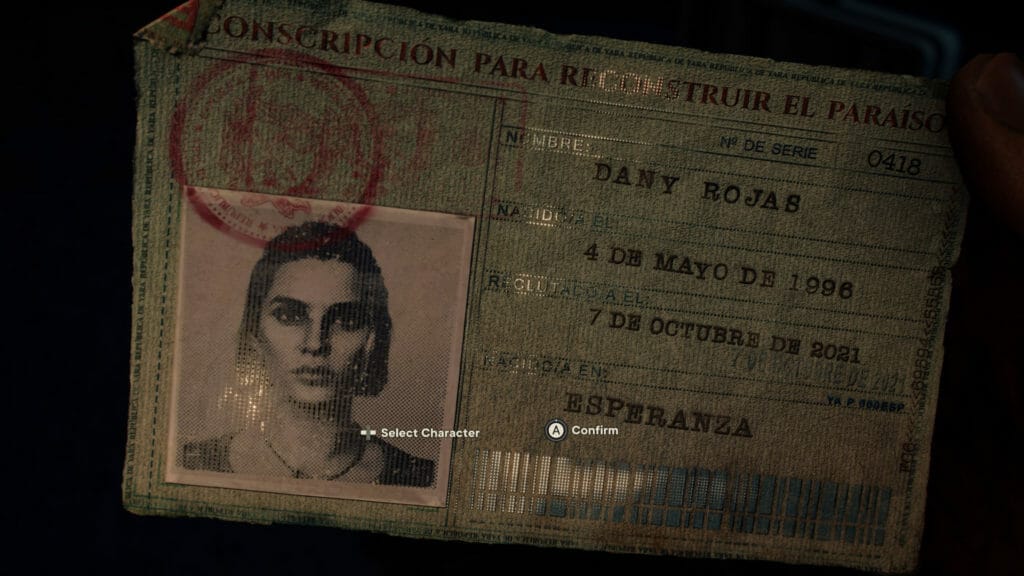
Far Cry 6, like the game before it, follows a very interesting yet familiar design. Whereas Far Cry 3 was all about how insanity shapes the world (consequences be damned) and Far Cry 5 brought extremism and gun control to light, the latest instalment concerns itself with dictatorship, control, and fascism (topics at the forefront of current sociopolitical discourse). Ubisoft’s insistence on using the Far Cry license to explore the extremes of current events may seem counterproductive at first, but in reality each title serves as an artful reminder of the issues around the time in which they were crafted. Despite how these titles seem to imbue themselves with global issues, while simultaneously not making them the focus of the experiences, is an art form unto itself and showcases why the franchise has such a loyal following. The good news is Far Cry 6 is no different, and Ubisoft can once again be applauded for skirting the line just enough to bring important topics to light behind the guise of ‘video game entertainment’.
Similarly to previous titles, Far Cry 6 immediately throws players into the thick of things. At the start, a choice between a feminine or masculine Dany Rojas (Nisa Gunduz or Sean Rey) must be made – since they absolutely need to get the hell out of dodge. The military is seemingly invading their own little island town and the police are doing nothing to stop them. The opening moments of the game clearly showcases the absolute power “El Presidente” Anton Castillo (Giancarlo Esposito) exercises. Castillo, a military general who was voted into power under false pretences, displays an unthinking fixation on becoming the one and only authority in all of Yara. His motives become ever clearer with growing degrees of unhinged behaviour every time he is seen in public.
From the moment the game gives players the wheel and opens into an exciting and action packed tutorial experience, one thing is certain: unlike previous titles, Far Cry 6 wants to be a cinematic experience. The tutorial alone showcases a breadth of gritty storytelling and darkness not seen in any previous title. The cinematography is outstanding, with sound design and excellent motion capture rounding off the experience. Although the introduction may have sown seeds of doubt in terms of quality, in the way some games bait-and-switch their coolest moments at the start; the good news is how this is most certainly not the case with Far Cry 6 – which features high production values from start to end. As the tutorial comes to a close, Dany eventually washes up on a beach. In an effort to avenge their dead family and friends, they join the local resistance (the Libertad) and proceed to become one of the organisation’s most important assets, but not without a little bit of pushback.
Yara is huge and beautiful. The explorable locations are easily equal to (if not larger) than Far Cry 5’s Hope County. This time players have access to the entire island region, with multiple resistance splinter groups vying to get into the Lion’s Den, and end Castillo’s reign once and for all. As Dany, the player’s main goal is to unite all of these resistance groups under the Libertad flag. This opening mission acts as the driving force for most of the game, as players get to explore and familiarise themselves with the different provinces of Yara. Eventually, events will come to a head and the game’s second, arguably darker, act starts; and this is where Far Cry 6 surpasses every game before it. The narrative alone is leagues above and beyond what even Far Cry 5, the strongest game in the franchise, could muster. It hits all the right marks and ticks all the correct boxes for it to be a perfect story. Couple this with the exceptional performances by all actors involved, and the experience itself is mesmerising – to say the least.
It would be a crime not to mention how far the franchise has come since Far Cry 5 in terms of aesthetic. Far Cry 5 truly surpassed expectations with its depiction of small town, isolated America. However, it is Far Cry 6 that truly shines in terms of how the South American outback and island organically come to life. Yara feels truly alive with non-playable characters (NPCs) seemingly living normal lives, while the military are constantly hounding shop owners or suspected Libertad members. Characters are all exceptionally well rendered, with sharp textures and beautiful player models all around. While not extravagantly different, each province in Yara can be distinguished by its flora and fauna. From a slight difference in archetypal trees to varying animals (whether small or large), Ubisoft clearly attempted to make the island country as diverse as realism would allow; and they largely succeeded. Yara may be around the same size as Hope County, but it certainly feels so much larger as a result. It is wonderful to grapple onto a particularly high mountain, get atop, and look over how the beauty of the tropical island distinguishes itself from region to region. The level of immersion is truly great.
With the above in mind, it must be noted how the game was reviewed on Xbox Series X with an additional HD Texture Pack installed. Even so, it all ran smoothly with some of the franchise’s most beautiful aesthetics yet.
Some players, especially those who have not experienced the franchise since Far Cry or Far Cry 2, will immediately notice the game’s incredible disparity between ‘grit and wit’. It is rather noticeable, and [after five other games in the franchise] very deliberate. Examples to this fact become clear right from the start: Anton Castillo is an evil man who executes people in cold blood while his son is forced to watch. Meanwhile, the game provides the player with a pet alligator called Guapo – he has a toothy grin only a mother could love and bears a golden tooth. He loves rolling in the mud, and is the loyal companion to a drunk pyromaniac called Juan. Another example comes by way of how the side missions range from serious tobacco farm burning, through to cock fighting literally mimicking Tekken or Mortal Kombat — seriously, this “mini game” is a full-fledged fighting game with unlockable roosters! This weird disparity is clearly purposeful and a weird quirk gamers will have to get used to in order to fully immerse themselves in the gloriousness of the full Far Cry 6 experience. This is an absolute must, considering how much there is to do, see and experience.
Despite many unique changes, gamers familiar with Far Cry 5 will feel right at home with Far Cry 6. There is a wide open world to explore, with enemy forts (military camps) to capture. Some Side Missions include stealing trucks, planes, helicopters, and tanks, while others will explore the dark repercussions of slavery and military tearing families apart in the name of “peace”. Similarly, Far Cry 6 also features companions, and an entire arsenal of unlockable gear. However, upon closer inspection and after a few hours in Yara, it becomes abundantly clear how much Ubisoft has refined every single aspect of these experiences!
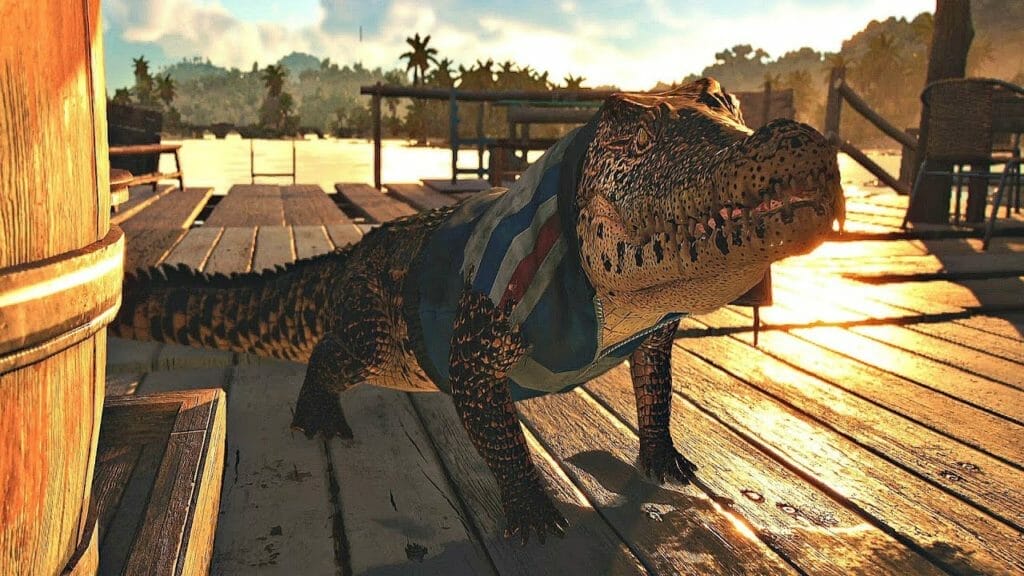
Companions, for instance, are now called “amigos”, and the only permanent amigos come in the form of animal companions. These include Guapo (the toothy alligator), Chorizo (the goodest of boys), Chicharron (a crazy dang chicken), Boom Boom (another pupper), and Oluso (a big kitty cat). Gold Edition and Ultimate Edition players, or those who purchase the extra content packs, will get to play with up to two additional amigos, K-9000 and Champagne. Furthermore, unlockable gear this time come in the form of secret boxes and treasures – it is no longer possible to pick up just any gun and use it. Instead, a weapon must be unlocked by purchasing it at a vendor, unlocking it in story-specific ways, or simply by “ranking up” Dany Rojas.
Following on Ubisoft‘s tradition of adding some type of camp building and/or upgrading to their long-standing franchises is Far Cry 6‘s new camp upgrade system. With every major camp unlocked, players can opt to upgrade their guerrilla camps with two major additions. These additions require resources the same way crafting weapon upgrades do, but open up new ways to experience the immediate area. Players who are in dire need of more gear can opt for something like a barracks, for instance. This system is not as comprehensive or involved as the one featured in Assassin’s Creed: Valhalla, but it is not so much of a necessity either. A nice to have, if you will.

On the topic of gear, it must be noted how Far Cry 6 completely does away with the progression-based skill systems of previous games. Instead, Dany ranks up after filling up their experience bar, which results in more upgrades becoming available at the work bench. Weapons then need to be found in chests or unlocked via missions while armour are unlocked in a similar way. With that said, armour also works a little bit differently this time around with certain pieces affording specific stats and/or perks, while others are only there to look good. Players can expect to see the usual array of weapons and gear with no real special fanfare beyond the upgrades they will be crafting for the guns. Nevertheless, there are two new special additions to the game: the Supremo, and Resolver guns.
The supremo is a Do-It-Yourself strap-job only MacGyver would be proud of, which is strapped to Dany’s back. This big “gun” comes in three variants (derived by the player’s play style), and acts as a “special attack” akin to those seen in games like Overwatch or Apex Legends, and even includes a lengthy cooldown. Resolver weapons, on the other hand, are just special (and big) weapons. Weapons in this category include flamethrowers, an absolutely amazing shotgun/shield Captain America type weapon, and more. In all, these are two seemingly small additions, which ultimately overhaul combat immensely; moreso even than the companion/amigo changes!
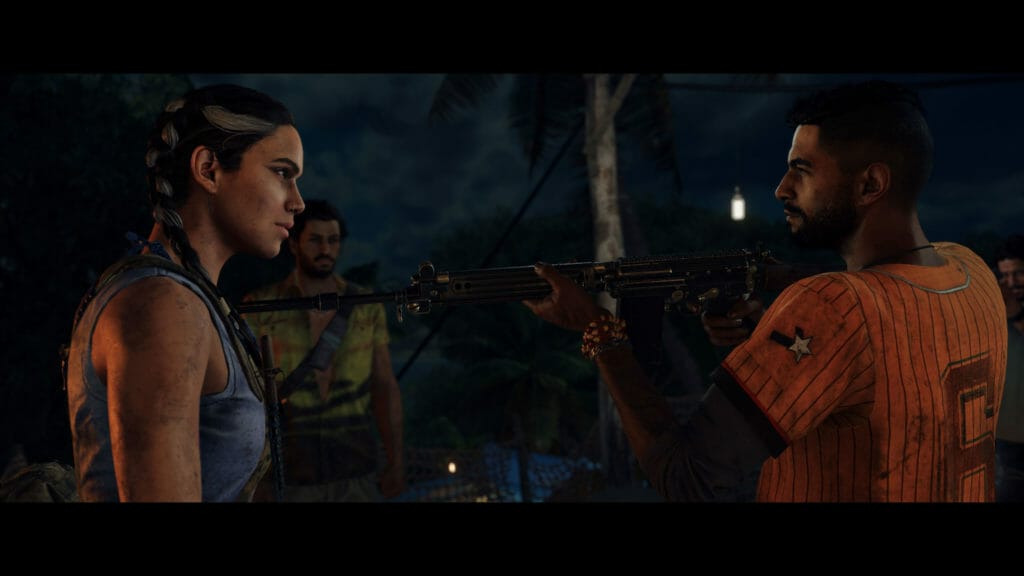
Making gear ever more fun is the inclusion of multiplayer in Far Cry 6. For the most part, this mode essentially mimics the previous games – with only a few changes. For a start, the multiplayer only becomes available once the second, and main, island of the game is reached. Unlike previous titles where players needed to get to radio towers to call in friends, all one needs to do in Far Cry 6 is send a friend invite. Provided they have reached the same spot in the game (roughly two hours in), they will be able to simply drop into the invited game (which plays as host)! Once in-game, both players can literally do whatever they would normally do in the single player version of the game. The difference, however, comes down to extra credit earned when missions are complete and how it essentially offers a double dose of fun.
Collectibles are also shared among both friends, and unlocks become available as both friends come across the same chests. It is particularly cool how the invited friend always takes on the visage of the opposite gendered Dany (at least during testing), and how their quips and animations are modified to accommodate for the change. While the second player is just another version of the first player, it seems like Ubisoft went out of their way to make the mode feel more immersive – a constant theme throughout Far Cry 6.
Another point of interest takes the form of the sound design. Far Cry 5 had an incredible budget added to its sound department, specifically for its original and licensed soundtrack. That was the extent of it, however, as ambient and normal virtualisation mixing sounded fairly on par with most other titles. Far Cry 6, on the other hand, seems to have had a renewed focus in its overall sound. All licensed music feels pertinent and incredibly well placed and sound design is exceptional. From the way loud radios play in vehicles driving by on the road, and how bashing one music box in pieces will not randomly stop or pause the radio like it did in previous titles, with the exact song continuing later when entering another vehicle; it is clear sound design was a priority. Similarly, ambience seems to have received a proper “rank up” of its own too; with, in this author’s humble opinion, some of the best sound design ever featured in a Far Cry title! Since this is the first title developed primarily for modern consoles, one has to wonder whether the new 3D Audio API and technologies featured in the Xbox Series X|S and PlayStation 5 may have something to do with it? Nevertheless, the sound experience is incredibly good.
At first glance, Far Cry 6 appears to provide the quintessential triple-A open-world experience. However, upon closer inspection and by allowing the game to truly showcase its strengths, it quickly becomes apparent how much love and attention has been put into it. From an excellent cast spearheaded by one of the most captivating villains to appear in video games, through to an enthralling world designed around its sounds and culture; everything about the game is of a very high polish and calibre. Further cementing this notion is how the title is not filled by random missions and events; rather the missions are cleverly placed to accommodate the amigos and the plethora of gear players come across. Thus providing a wonderful sense of immersion in a world feeling alive with possibility. Although the narrative may seem plain and cliche at first; the plot soon hooks and flourishes into a veritable masterpiece of storytelling. In a sense, Far Cry 6 is a game that loves to reward scrutiny. In this way, it consistently amazes with new and exciting events while a constant dramatic narrative rumbles along in the background. It truly is exceptional and easily serves as the new bar for what this franchise can be, and ultimately is.
Verdict
Exceptional
| PROS | CONS |
| Yara is gorgeous! | Disparity between humour and gritty narration might be off-putting |
| Top tier sound design | |
| Anton Castillo is a surprisingly good and memorable antagonist |
Title reviewed on Xbox Series X with code supplied by Ubisoft.
Learn more about our review methodology here.
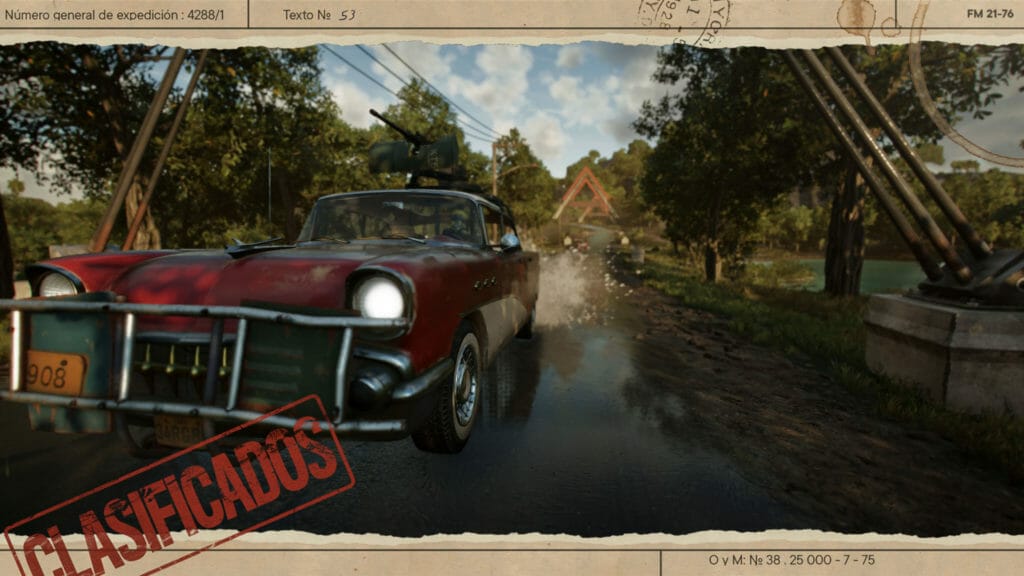
Junior Editor at Vamers. From Superman to Ironman; Bill Rizer to Sam Fisher and everything in-between, Edward loves it all. He is a Bachelor of Arts student and English Major specialising in Language and Literature. He is an avid writer and casual social networker with a flare for all things tech related.

